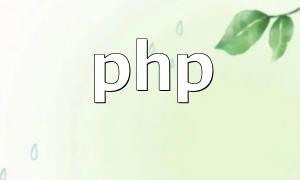PHP is a widely-used server-side scripting language in web development. In web development, there are often scenarios where you need to save remote images to a local directory. This article shows how to achieve this functionality using PHP.
In PHP, you can use the file_get_contents() function to fetch the content of remote images, and the file_put_contents() function to save that content to a local file. Below is an example code snippet demonstrating this process:
<?php
// List of remote image URLs
$image_urls = array(
'https://example.com/image1.jpg',
'https://example.com/image2.jpg',
'https://example.com/image3.jpg'
);
// Save directory path
$save_dir = 'path/to/save/directory/';
// Iterate over the image URL list
foreach ($image_urls as $image_url) {
// Get remote image content
$image_data = file_get_contents($image_url);
if ($image_data !== false) {
// Extract image filename from URL
$image_name = basename($image_url);
// Concatenate the save path
$save_path = $save_dir . $image_name;
// Save image to local directory
$result = file_put_contents($save_path, $image_data);
if ($result !== false) {
echo 'Image saved successfully: ' . $save_path . '<br>';
} else {
echo 'Image save failed: ' . $save_path . '<br>';
}
} else {
echo 'Unable to fetch image content: ' . $image_url . '<br>';
}
}
?>
In the above code, we first define an array $image_urls containing multiple remote image URLs, and a save directory path $save_dir which specifies the local directory where the images will be saved.
Next, we iterate over the $image_urls array to fetch the content of each remote image. The file_get_contents() function is used to retrieve the image content from the remote URL. If the content is successfully retrieved, we then extract the image filename using the basename() function and concatenate it with the save path to form the final save path $save_path.
Then, we use file_put_contents() to save the image content to the specified $save_path. If the save operation is successful, a success message is displayed; otherwise, a failure message is shown.
With the above code example, you can easily save remote images to your local server. In real-world applications, you can modify the code as needed to save different remote images and set the save path to a valid directory within your project.
This is the basic method for saving remote images to local using PHP. If you have more questions, you can refer to relevant PHP documentation and tutorials, or try implementing more advanced image processing features.








